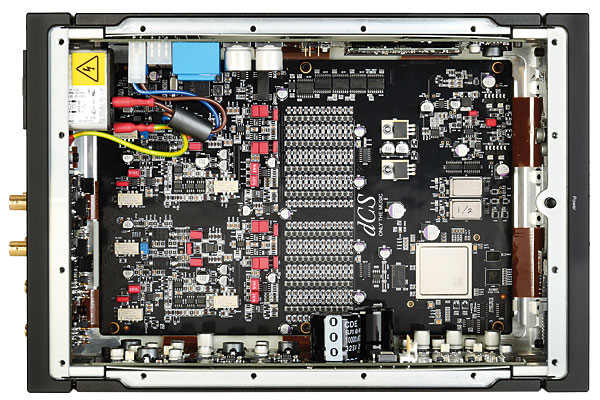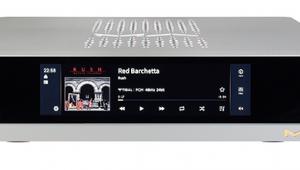dCS Lina Network DAC 2.0 Network-Attached DAC

 Nestled at the heart of dCS's three-box Lina headphone amp solution is the Lina DAC, now refreshed with APEX-level firmware as a springboard into its mainstream range
Nestled at the heart of dCS's three-box Lina headphone amp solution is the Lina DAC, now refreshed with APEX-level firmware as a springboard into its mainstream range
When dCS was founded in 1987, the idea that hi-fi hardware could be comprehensively upgraded without the need to lug it back to the shop might have seemed the stuff of science-fiction. Skip forward some 40 years, however, and firmware updates – delivered over-the-air for networked products – have become the norm. They're often used to squash 'bugs' and tweak minor settings, but what the Cambridge-based company has done with its Lina Network DAC is more noteworthy.
This unit debuted in 2022 alongside two other Lina components: the Headphone Amplifier and the Master Clock [HFN Nov '22]. All similarly styled and of the same desktop-ready size, the Lina system was aimed at head-fi enthusiasts. Since then, however, dCS has returned to the Network DAC and done what it perhaps should have done from the outset – open up its potential as a standalone DAC so that it more obviously serves as the entry point to its higher-spec Bartók [HFN Apr '23], Rossini and Vivaldi APEX [HFN Jun '22] models.
Six Appeal
In the spring of 2023, a firmware update to 'Lina 1.1' status introduced a digital volume control, allowing the Network DAC to be used directly into a power amplifier. But now we get 'Lina 2.0', which not only makes further 'ease-of-use' adjustments but unlocks more of dCS's processing potential and DAC technologies. Described by the company as a 'major performance upgrade', the firmware update is available free of charge to those who have already bought the Network DAC, and is managed by dCS's Mosaic app. Naturally, you'll find the Lina 2.0 firmware running on all newly bought models.

Apart from a new channel balance feature, and the ability for the Lina Network DAC to be controlled via a dCS remote, the headline changes are those actually predicted in HFN when we reviewed the unit in 1.0 guise, and they will satisfy hi-fi tweakers. Rather than limiting the linear phase-type filter selection to two choices, the Lina 2.0 offers the same six-strong filter choice you will find on dCS's full-size Bartók and Vivaldi DACs. There are also now three 'mapper' settings for the unit's custom Ring DAC while DSD upsampling has also been uprated to DSD128.
dCS debuted its Ring DAC converter over 30 years ago and it's now a highly evolved and practical technology that seeks to combine the pure monotonic conversion of a genuine 'single-bit' DAC with the operation of a PWM bitstream-style converter. The current Ring DAC hosts all its custom DSP, including the digital filters, on a Xilinx Spartan processor, truncating incoming LPCM data (and converting DSD) to an average wordlength of 4.6 bits. This is sufficient to address the 48 'identical' current sources that comprise the Ring DAC – this is the component matrix that's clearly visible in our inside picture.
Key Words
Rather than use these wordlengths to control the length of time a single current source is held open or closed, as is the case with traditional PWM/bitstream/hybrid DACs, the Ring DAC treats all 48 current sources as equal and switches one or more 'on' to define the overall magnitude of each consecutive 'bit word'.
In practice, however, the elements in the Ring DAC matrix are not precisely equal. To address this, dCS randomises the mapping of bits to these current sources so that errors manifest themselves as a slight increase in noise rather than harmonic distortion. The new mapping options added to the Lina 2.0 also double the address rate to the Ring DAC, pushing this 'error noise' out to even higher (inaudible) ultrasonic frequencies.
From the outside, dCS's Network DAC looks just as elegant in its compact, 22cm-wide black alloy casework. The front panel offers nothing beyond a smart LCD display with touch-sensitive buttons below, and a standby button that's almost hidden away on the underside. There's a power switch around the back, next to a comprehensive set of connections including dual AES, USB-B, USB-A and S/PDIF inputs; an Ethernet port (there's no Wi-Fi here); and balanced XLR and unbalanced RCA analogue outputs. Network functionality includes Roon Ready status, Apple AirPlay 2, local file playback and, through the Mosaic Control app, streaming platform integration.


















































